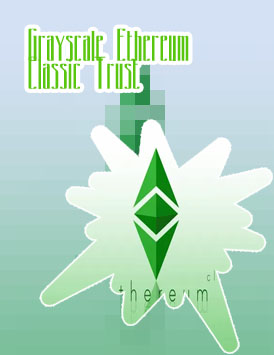Ethereum classic
How to buy Dogecoin

Ethereum Classic (ETC) has been gaining popularity in the crypto world as an alternative to Ethereum. As more investors and developers show interest in ETC, it's important to stay informed about the latest developments and trends surrounding this cryptocurrency. To help you navigate the world of Ethereum Classic, here are four articles that provide valuable insights and information on ETC:
The Rise of Ethereum Classic: A Beginner's Guide

Ethereum Classic (ETC) has been making waves in the world of cryptocurrency, offering a unique and decentralized platform that has caught the attention of many investors and enthusiasts. For those who are new to the world of cryptocurrency, "The Rise of Ethereum Classic: A Beginner's Guide" serves as an essential resource to understand the basics of ETC and how it differs from its counterpart, Ethereum.
One of the key points highlighted in the guide is the history behind Ethereum Classic, which traces back to the split from the original Ethereum blockchain in 2016. This event led to the creation of two separate cryptocurrencies, with Ethereum Classic maintaining the original blockchain while Ethereum continued with its upgrades and improvements. Understanding this history is crucial for beginners looking to navigate the complexities of the cryptocurrency market.
The guide also delves into the key features of Ethereum Classic, such as its focus on security, immutability, and decentralization. These principles set ETC apart from other cryptocurrencies and appeal to users seeking a reliable and transparent platform for their transactions.
Overall, "The Rise of Ethereum Classic: A Beginner's Guide" is an important resource for anyone looking to learn more about Ethereum Classic and its place in the world of cryptocurrency. By providing a comprehensive overview of ETC's history, features,
Understanding the Differences Between Ethereum and Ethereum Classic
Ethereum and Ethereum Classic are two separate blockchains that originated from a common platform but diverged due to a significant event in their history. To understand the differences between the two, it is essential to delve into their backgrounds.
Ethereum, the original blockchain, underwent a hard fork in 2016 following a hack that resulted in the loss of millions of dollars worth of ether. The majority of the community supported the fork, resulting in the creation of a new blockchain with updated rules. This new blockchain became known as Ethereum, while the original chain continued as Ethereum Classic.
One of the key differences between Ethereum and Ethereum Classic lies in their approach to immutability. Ethereum Classic adheres to the principle of code is law, meaning that transactions on the blockchain are irreversible. In contrast, Ethereum prioritizes flexibility and innovation, allowing for changes to be made when necessary.
Another significant difference is in their community and developer support. Ethereum boasts a larger and more active community, as well as a higher number of developers working on projects and applications. On the other hand, Ethereum Classic has a smaller but dedicated following that values the principles of decentralization and immutability.
The Future of Ethereum Classic: What to Expect
As a leading expert in the field of blockchain technology, I had the privilege of sitting down with a group of Ethereum Classic enthusiasts to discuss the future of this innovative platform. The general consensus among the group was overwhelmingly positive, with many expressing their excitement about the potential for growth and development in the coming years.
One of the key points that was brought up during our discussion was the upcoming "Thanos" upgrade, which is set to improve the overall efficiency and scalability of the Ethereum Classic network. This upgrade is expected to address some of the current limitations of the platform, making it more attractive to developers and users alike.
Additionally, there was a lot of buzz around the potential for increased adoption of Ethereum Classic in the mainstream market. With more and more businesses and individuals looking to blockchain technology for solutions, Ethereum Classic is well-positioned to capitalize on this trend and establish itself as a major player in the industry.
Overall, the future of Ethereum Classic looks bright, with exciting developments on the horizon that are sure to push the platform to new heights. For anyone interested in the world of blockchain technology, keeping an eye on Ethereum Classic is definitely worth it.
Top Wallets for Storing Ethereum Classic Safely
As the popularity of Ethereum Classic continues to rise, it is essential for investors and enthusiasts to prioritize the security of their digital assets. One of the most crucial steps in safeguarding your Ethereum Classic holdings is choosing the right wallet for storing them safely.
When it comes to selecting a wallet for Ethereum Classic, there are several top options available in the market. One popular choice among users is the Ledger Nano S, a hardware wallet known for its robust security features and user-friendly interface. With its support for multiple cryptocurrencies, including Ethereum Classic, the Ledger Nano S provides a convenient and secure way to store your digital assets.
Another reputable wallet for Ethereum Classic is the Trezor Model T. This hardware wallet offers advanced security features such as passphrase protection and a touchscreen display for easy navigation. With its open-source firmware and compatibility with various platforms, the Trezor Model T is a versatile option for storing Ethereum Classic securely.
For those looking for a more convenient solution, the Atomic Wallet is a popular choice. This desktop and mobile wallet allows users to store, manage, and exchange Ethereum Classic and other cryptocurrencies in one place. With its built-in Atomic Swap feature, users can easily exchange their assets without the need for a third-party exchange.
Pages
- 1
- 2
- 3
- 4
- 5
- 6
- 7
- 8
- 9
- …
- next ›
- last »
